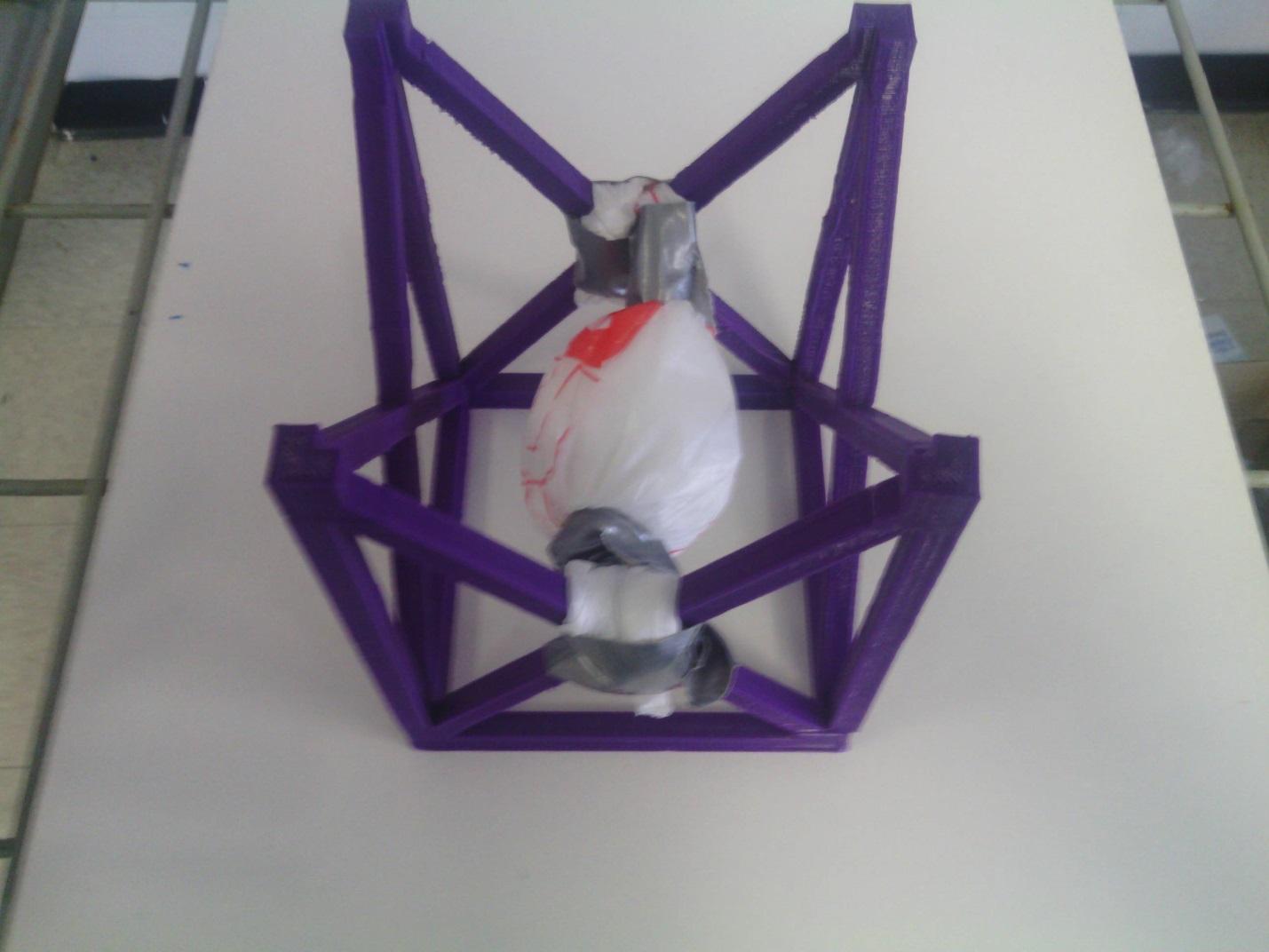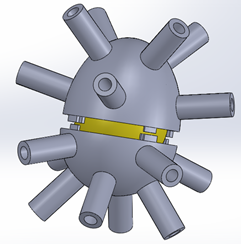A core theme at NVBOTS is “Engineering, Technology and Applications of science”. Earlier this year, our design interns came up with some 3D-printable educational materials that meet the Next Generation Science Standards. One area of focus was on developing solutions to the renowned “egg drop challenge”.
The “egg drop challenge” is a competition usually held in secondary schools, where the competitors attempt to create devices that can keep a raw chicken egg intact when dropped from a given height. Each intern in one team was required to come up with one or more design solutions. The material restrictions were as follows:
-
No more than two items from the list: paper towel, paper clips, plastic bag, rubber bands, strings, duct tape;
-
An unlimited amount of glue, scotch tape and 3D-printed material, with preference given to lighter designs;
Two different solutions were designed: Egg Capsule and Egg Support.
The Egg Capsule
The purpose of the egg capsule is to protect a chicken egg from breaking during a drop. The capsule does so by minimizing the impact (stress) on the egg. The capsule has the shape of an egg with fifteen one-inch long fins spread around its surface. The hope is that the fins will significantly reduce the area of contact between the egg and the ground, hence decreasing the stress on the egg. Figure 1 displays a 3D model of the egg capsule.
Figure 1: Egg capsule for the Egg Drop Challenge.
Unfortunately, the physics described in the previous paragraph is flawed and caused the egg capsule to fail. Stress is equal to applied force over area of contact, which means that reducing the contact area actually increases the stress on the egg, causing the egg to break even more easily.
Although this design was a failure, it was a useful reminder of the importance of the laws of physics. The egg capsule could be used as a demonstration tool to teach about forces and stresses on an object.
Egg Support
For the second design, they decided to go with a very simple idea. An egg breaks because of the impact against a hard surface. In order to prevent breakage, all they had to do was simply eliminate all possible contacts with the ground and any other hard surface. Why not put an egg in a plastic bag and suspend it in a solid box? That is exactly what they did. They printed a box, put an egg in a plastic bag and linked the two systems with duct tape, as displayed in figure 2.

Figure 2. Egg Support. This photo was taken after the egg survived a 2 meter drop.
The egg support was tested from a height of two meters and the egg remained intact: success!
This design worked well because the plastic bag not only provided a soft support for the egg but also acted as a damper. Meanwhile, the printed box provided support and stability to the egg and absorbed most of the shock from the fall. In fact, the box broke in the process but the egg survived.
From this second design, they learned that the simplest ideas are the easiest to test and (quite often) work best. They also learned that rigorous application of the laws of physics is extremely important in engineering design.
And this is just one example. NVBOTS continues to design and test prototypes, while increasing the database of printable educational engineering projects for high schools around the globe. With each project, our goal is to inspire students to bring their own theories and ideas to life.




